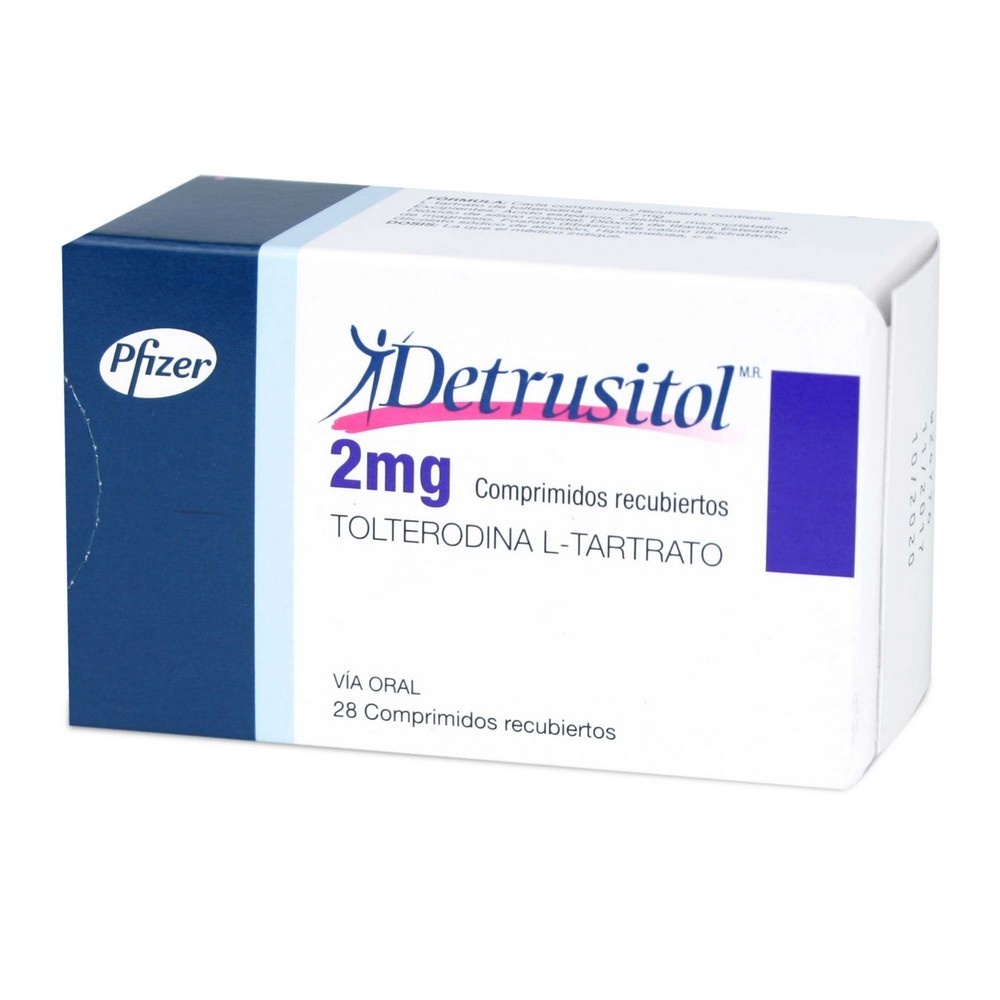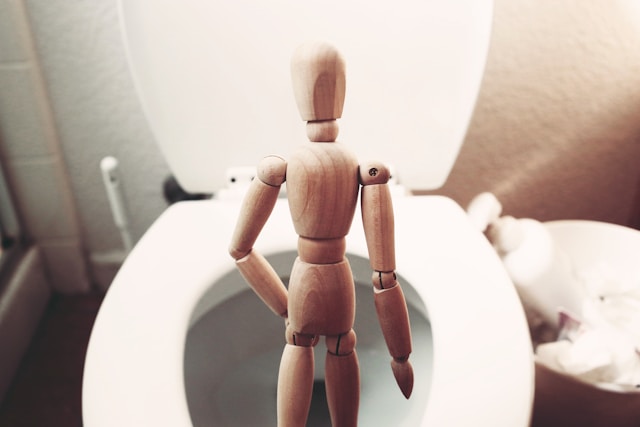

ДЕТРУЗИТОЛ 2 мг ТАБЛЕТКИ, ПОКРИТІ ПЛІВКОВОЮ ОБОЛОНКОЮ

Запитайте лікаря про рецепт на ДЕТРУЗИТОЛ 2 мг ТАБЛЕТКИ, ПОКРИТІ ПЛІВКОВОЮ ОБОЛОНКОЮ

Інструкція із застосування ДЕТРУЗИТОЛ 2 мг ТАБЛЕТКИ, ПОКРИТІ ПЛІВКОВОЮ ОБОЛОНКОЮ
Вступ
Опис: інформація для пацієнта
Детрусітол 2 мг таблетки, покриті оболонкою
(Тартрат толтеродину)
Прочитайте уважно весь опис перед тим, як почнете приймати препарат
- Збережіть цей опис, оскільки вам може знадобитися знову його прочитати.
- Якщо у вас є якісь сумніви, проконсультуйтеся з вашим лікарем або фармацевтом.
- Цей препарат призначений тільки для вас, і не слід давати його іншим людям, навіть якщо вони мають相同ні симптоми, оскільки це може їм нашкодити.
- Якщо ви відчуваєте побічні ефекти, проконсультуйтеся з вашим лікарем або фармацевтом, навіть якщо це побічні ефекти, які не вказані в цьому описі. Див. розділ 4.
Зміст опису
- Що таке Детрусітол і для чого він використовується.
- Що вам потрібно знати перед тим, як приймати Детрусітол.
- Як приймати Детрусітол.
- Можливі побічні ефекти.
- Збереження Детрусітолу.
- Зміст упаковки та додаткова інформація
1. Що таке Детрусітол і для чого він використовується
Активний інгредієнт Детрусітолу - толтеродин. Толтеродин належить до групи лікарських засобів, що називаються антихолінергічними.
Детрусітол використовується для лікування симптомів синдрому гіперактивного сечового міхура. Якщо у вас є синдром гіперактивного сечового міхура, ви можете відчувати:
- неможливість контролювати сечовипускання добровільно.
- відчуття раптової та нагальної потреби сечовипускання без попередження і/або збільшення кількості сечовипускань протягом дня.
2. Що вам потрібно знати перед тим, як почати приймати Детрусітол
Не приймайте Детрусітол, якщо:
- Ви алергічний (гіперчутливий) до толтеродину або будь-якого іншого компоненту Детрусітолу (вказаних у розділі 6).
- Ви не можете виводити сечу з сечового міхура (уретральна ретенція).
- Ви страждаєте на глаукому з вузьким кутом без контролю (високий внутрішньоочний тиск з втратою поля зору, який не лікується належним чином).
- Ви страждаєте на міастенію гравіс (надмірну слабкість м'язів).
- Ви страждаєте на важку виразкову коліт (виразкова інфекція та запалення в товстій кишці).
- Ви страждаєте на токсичний мегаколон (гостре розширення товстої кишки).
Попередження та обережність:
Проконсультуйтеся з вашим лікарем або фармацевтом перед тим, як почати приймати Детрусітол, якщо ви думаєте, що будь-яка з цих ситуацій може бути актуальною для вас:
- Якщо у вас є труднощі з сечовипусканням і/або сечовипусканням з слабким або повільним струменем.
- Якщо у вас є захворювання травної системи, яке впливає на проходження та/або травлення їжі.
- Якщо у вас є проблеми з нирками (ниркова недостатність).
- Якщо у вас є захворювання печінки.
- Якщо у вас є порушення нейронної системи, які впливають на ваш тиск, функцію кишечника або статеві функції (будь-яке порушення автономної нервової системи).
- Якщо у вас є гіатальна грыжа (грыжа в органах черевної порожнини).
- Якщо ви коли-небудь відчуваєте зменшення рухливості кишечника або страждаєте на важкий запор (зменшення рухливості кишечника).
- Якщо у вас є важливе захворювання серця, наприклад:
- анормальний кардіограма
- замедлення серцебиття (брадикардія)
- попередні захворювання серця, наприклад:
- кардіоміопатія (слабкість серцевого м'яза)
- ішемічна хвороба серця (зменшення кровотоку до серця)
- аритмія (порушення серцебиття)
- серцевна недостатність
- Якщо у вас є аномально низькі рівні калію (гіпокаліємія), кальцію (гіпокальціємія) або магнію (гіпомагніємія) в крові.
Інші лікарські засоби та Детрусітол:
Повідомте вашому лікареві, якщо ви приймаєте або приймали нещодавно будь-які інші лікарські засоби.
Толтеродин, активний інгредієнт Детрусітолу, може взаємодіяти з іншими лікарськими засобами.
Не рекомендується використання толтеродину в поєднанні з:
- більшість антибіотиків (містять, наприклад, еритроміцин та кларитроміцин).
- лікарські засоби, що використовуються для лікування грибкових інфекцій (містять, наприклад, кетоконазол та ітраконазол).
- лікарські засоби для лікування ВІЛ.
Детрусітол повинен застосовуватися з обережністю при поєднанні з:
- більшість лікарських засобів, що впливають на рух їжі (містять, наприклад, метоклопрамід та цисаприд).
- лікарські засоби для лікування нерегулярного серцебиття (містять, наприклад, аміодарон, соталол, хінідин та процайнамід).
- інші лікарські засоби, що мають подібну дію до Детрусітолу (антимускаринові властивості) або лікарські засоби, що мають протилежну дію до Детрусітолу (холінергічні властивості). Проконсультуйтеся з вашим лікарем, якщо ви не впевнені.
Прийом Детрусітолу з їжею та напоями.
Детрусітол можна приймати до, під час або після їжі.
Вагітність та лактація
Вагітність
Ви не повинні приймати Детрусітол, якщо ви вагітні. Повідомте вашому лікареві негайно, якщо ви вагітні або думаєте, що можете бути вагітною, або якщо плануєте завагітніти.
Лактація
Не відомо, чи виділяється толтеродин з грудним молоком. Не рекомендується використання Детрусітолу під час лактації. Проконсультуйтеся з вашим лікарем або фармацевтом перед тим, як приймати будь-які лікарські засоби.
Водіння транспортних засобів та використання машин:
Детрусітол може викликати у вас відчуття запаморочення, втоми або вплинути на ваш зір; ваша здатність водити транспортні засоби або використовувати машини може бути порушена.
Детрусітол містить натрій
Цей лікарський засіб містить менше 23 мг натрію (1 ммоль) на одну дозу; це означає, що він практично не містить натрію.
3. Як приймати ДЕТРУСІТОЛ
Доза:
Слідуйте точно інструкціям щодо прийому Детрусітолу, вказаним вашим лікарем.
Проконсультуйтеся з вашим лікарем або фармацевтом, якщо у вас є якісь сумніви.
Рекомендована доза - одна таблетка по 2 мг двічі на день, крім пацієнтів, які страждають на захворювання печінки або нирок, або мають неприємні побічні ефекти, у яких лікар може зменшити дозу до однієї таблетки по 1 мг двічі на день.
Не рекомендується використання Детрусітолу у дітей.
Детрусітол приймається перорально. Таблетки повинні ковтатися цілими.
Тривалість лікування:
Ваш лікар призначить тривалість лікування Детрусітолом. Не припиняйте лікування раніше, якщо ви не бачите негайного ефекту, оскільки вашому сечовому міхурю потрібно час, щоб адаптуватися до препарату. Завершите лікування згідно з призначенням вашого лікаря. Якщо ви не відчуваєте жодного ефекту, проконсультуйтеся з вашим лікарем.
Користь від лікування повинно бути переоцінено через 2-3 місяці після початку прийому препарату.
Завжди проконсультуйтеся з вашим лікарем, якщо ви думаєте про припинення лікування.
Якщо ви прийняли більше Детрусітолу, ніж потрібно:
Якщо ви або хтось інший прийняв надто багато таблеток, негайно проконсультуйтеся з вашим лікарем або фармацевтом.
У разі передозування або випадкового прийому зверніться до найближчої лікарні або проконсультуйтеся з Токсикологічною службою, телефон 91 562 04 20.
Якщо ви забули прийняти Детрусітол
Якщо ви забули прийняти одну дозу, прийміть її як тільки зможете. Однак, якщо вже час наступної дози, чекайте наступної дози та прийміть її в звичайний час. У цьому випадку продовжуйте приймати таблетки згідно з інструкціями вашого лікаря.
Не приймайте подвійну дозу для компенсації забутої дози.
Якщо у вас є якісь додаткові питання щодо використання цього продукту, проконсультуйтеся з вашим лікарем або фармацевтом.
4. Можливі побічні ефекти
Як і всі лікарські засоби, цей препарат також може мати побічні ефекти, хоча не всі люди їх відчувають.
Ви повинні негайно проконсультуватися з вашим лікарем, якщо ви відчуваєте симптоми ангіоедему, такі як:
- Відчуття запаморочення обличчя, язика або глотки.
- Труднощі з ковтанням.
- Кропив'янка та труднощі з диханням.
Крім того, ви повинні шукати медичну допомогу, якщо ви відчуваєте алергічну реакцію (наприклад, свербіж, висип, кропив'янка та труднощі з диханням). Це трапляється рідко (не менше 1 випадку на 1000 пацієнтів).
Повідомте вашому лікареві або зверніться до відділення невідкладної допомоги, якщо ви відчуваєте:
- Біль у грудях, труднощі з диханням або втома (навіть у стані спокою), труднощі з диханням вночі, набряк ніг.
Це можуть бути симптоми серцевої недостатності. Це трапляється рідко (не менше 1 випадку на 1000 пацієнтів).
Наступні побічні ефекти були виявлені під час лікування Детрусітолом з наступними частотами.
Дуже часті(можуть впливати на більше 1 з 10 осіб):
- Сухість у роті
- Головний біль
Часті(можуть впливати на до 1 з 10 осіб):
- Бронхіт
- Запаморочення, сонливість, болі в пальцях рук і ніг
- Сухість очей, розмитість зору
- Вертіго
- Пальпітації
- Труднощі з травленням (диспепсія), запор, болі в животі, надмірна кількість повітря або газів у шлунку або кишечнику, блювота
- Сухість шкіри
- Болі або труднощі з сечовипусканням, нездатність спорожнити сечовий міхур.
- Втома, біль у грудях, набряк через накопичення рідини (наприклад, у щиколотках)
- Збільшення ваги
- Діарея
Рідкі(можуть впливати на до 1 з 100 осіб):
- Алергічні реакції
- Нервозність
- Збільшення частоти серцебиття, серцевої недостатності, нерегулярного серцебиття.
- Пекучість у шлунку
- Порушення пам'яті
Додаткові реакції, які були повідомлені, включають важкі алергічні реакції, сплутаність, галюцинації, червоність шкіри та ангіоедем, дезорієнтацію. Було повідомлено про випадки погіршення симптомів деменції у пацієнтів, які приймають лікування від деменції.
Якщо ви вважаєте, що будь-який з побічних ефектів, які ви відчуваєте, є серйозним, або якщо ви помітили будь-який побічний ефект, який не вказаний в цьому описі, повідомте вашому лікареві або фармацевту
Повідомлення про побічні ефекти
Якщо ви відчуваєте будь-який побічний ефект, проконсультуйтеся з вашим лікарем або фармацевтом, навіть якщо це побічні ефекти, які не вказані в цьому описі. Ви також можете повідомити про них безпосередньо через Іспанську систему моніторингу лікарських засобів: www.notificaram.es.
Повідомляючи про побічні ефекти, ви можете допомогти надати більше інформації про безпеку цього лікарського засобу.
.
5. Збереження ДЕТРУСІТОЛУ
Тримайте Детрусітол поза зоною досяжності дітей.
Не використовуйте цей лікарський засіб після закінчення терміну придатності, який вказаний на упаковці. Термін придатності - останній день місяця, який вказаний.
Не потрібні особливі умови зберігання
Лікарські засоби не повинні викидатися у водопровід або сміття. Спитайте у вашого фармацевта, як позбутися упаковок та лікарських засобів, які вам не потрібні. Таким чином, ви допоможете захистити довкілля
6. Додаткова інформація
Склад Детрусітолу
Активний інгредієнт Детрусітолу 2 мг таблеток - толтеродин.
Кожна таблетка містить 2 мг толтеродину тартрату, що відповідає 1,37 мг толтеродину.
Допоміжні речовини:
Ядро: мікрокристалічна целюлоза, дигідрат фосфату кальцію, гліколат натрію (тип Б) (див. розділ 2 "Детрусітол містить натрій"), стеарат магнію та колоїдна діоксид кремнію.
Покриття: гіпромелоза, мікрокристалічна целюлоза, стеарова кислота та діоксид титану (E171).
Вигляд продукту та вміст упаковки
Таблетки Детрусітолу 2 мг білі, круглі, двовигнуті та з арками зверху та знизу від літер "DT".
Розміри упаковок, в яких випускається Детрусітол, наступні:
Блістерні упаковки:
20 таблеток (2 смуги по 10)
30 таблеток (3 смуги по 10)
50 таблеток (5 смуг по 10)
100 таблеток (10 смуг по 10)
14 таблеток (1 смуга по 14)
28 таблеток (2 смуги по 14)
56 таблеток (4 смуги по 14)
280 таблеток
560 таблеток
Банки: містять 60 або 500 таблеток.
Можливо, не всі розміри упаковок випускаються
Власник дозволу на маркетинг та відповідальна особа за виробництво:
Власник дозволу на маркетинг:
Farmasierra Laboratorios, S.L.
Carretera de Inún, km. 26,200
28700 San Sebastian de los Reyes (Madrid)
Відповідальна особа за виробництво:
Pfizer Italia, S.r.l.
63100 Marino del Tronto.
Ascoli Piceno. Італія
Цей лікарський засіб дозволений під назвою Детрусітол у країнах-членах Європейського економічного простору:Австрія. Бельгія та Люксембург, Фінляндія, Франція, Німеччина, Греція, Ірландія, Італія, Нідерланди, Португалія, Іспанія, Швеція, Велика Британія.
Дата останнього перегляду цього опису: лютий 2021
Детальна та актуальна інформація про цей лікарський засіб доступна на сайті Іспанського агентства лікарських засобів та медичних продуктів (AEMPS)http://www.aemps.es/

Скільки коштує ДЕТРУЗИТОЛ 2 мг ТАБЛЕТКИ, ПОКРИТІ ПЛІВКОВОЮ ОБОЛОНКОЮ в Іспанії у 2025 році?
ДЕТРУЗИТОЛ 2 мг ТАБЛЕТКИ, ПОКРИТІ ПЛІВКОВОЮ ОБОЛОНКОЮ коштує в середньому 28.58 євро у листопад, 2025 році. Ціна може змінюватися залежно від регіону, аптеки та наявності рецепта. Рекомендуємо перевіряти актуальну вартість у місцевих аптеках або через онлайн-сервіси.
- Країна реєстрації
- Середня ціна в аптеках28.58 EUR
- Діючі речовини
- Потрібен рецептТак
- Виробник
- Інформація є довідковою і не є медичною порадою. Перед прийомом будь-яких препаратів обов'язково проконсультуйтеся з лікарем. Oladoctor не несе відповідальності за медичні рішення, прийняті на основі цього контенту.
- Альтернативи до ДЕТРУЗИТОЛ 2 мг ТАБЛЕТКИ, ПОКРИТІ ПЛІВКОВОЮ ОБОЛОНКОЮФорма випуску: КАПСУЛА З МОДИФІКОВАНИМ ВИВІЛЬНЕННЯМ, 4 мгДіючі речовини: tolterodineВиробник: Farmasierra Laboratorios S.L.Потрібен рецептФорма випуску: КАПСУЛА З МОДИФІКОВАНИМ ВИВІЛЬНЕННЯМ, 4 мгДіючі речовини: tolterodineВиробник: Aurovitas Spain, S.A.U.Потрібен рецептФорма випуску: КАПСУЛА З МОДИФІКОВАНИМ ВИВІЛЬНЕННЯМ, 4.0 мгДіючі речовини: tolterodineВиробник: Laboratorios Cinfa S.A.Потрібен рецепт
Аналоги ДЕТРУЗИТОЛ 2 мг ТАБЛЕТКИ, ПОКРИТІ ПЛІВКОВОЮ ОБОЛОНКОЮ в інших країнах
Найкращі аналоги з тією самою діючою речовиною та терапевтичним ефектом.
Аналог ДЕТРУЗИТОЛ 2 мг ТАБЛЕТКИ, ПОКРИТІ ПЛІВКОВОЮ ОБОЛОНКОЮ у Poland
Лікарі онлайн щодо ДЕТРУЗИТОЛ 2 мг ТАБЛЕТКИ, ПОКРИТІ ПЛІВКОВОЮ ОБОЛОНКОЮ
Консультація щодо дозування, побічних ефектів, взаємодій, протипоказань та поновлення рецепта на ДЕТРУЗИТОЛ 2 мг ТАБЛЕТКИ, ПОКРИТІ ПЛІВКОВОЮ ОБОЛОНКОЮ – за рішенням лікаря та згідно з місцевими правилами.







